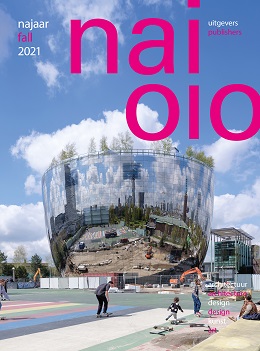
Catalogue Fall 2021
We proudly present our latest catalogue Fall 2021 with new publications on art, architecture and design. Leaf through the catalogue online.
At the corona-constrained opening of the Architecture Biennale, in a Venice that fears every centimetre of sea level rise, it becomes more clear than anywhere else that sparse or abundant land and water are the crucial spatial parameters in the answer to the question of how we will coexist in the future. Now that urbanization, migration, energy transition and climate change are the main global trends, designers will have to incorporate these two – land and water – into their design strategies and solutions for a liveable world. That is why land and water feature prominently in this autumn issue. The editors of OASE 110 as well as the researchers in BiodiverCITY turn their gaze to the land to find out how soil, as an often-neglected part of the urban ecosystem, can be used as a source of biodiversity and how designers can incorporate it in their designs of more sustainable, liveable cities. Raining Stories, the publication that accompanies the Netherlands pavilion for the Dubai World Expo, shows how Dutch design and innovation can connect food, water and energy and thereby embed land and water in a productive and sustainable ecosystem, with the pavilion itself as proof of principle.
But how, and where, will we live in our cities of the future? And how and where will we work? Wherever our laptops are, that seems to be the answer, but the ‘dangerous state of disconnection’ in which this results according to trend forecaster Lideweij Edelkoort demands a counter-response, an answer with which connections can be re-established. And Edelkoort sees the library – an ancient institute in transition – as the best possible place for this: a place of encounter and exchange (rather than only books). This contracyclical way of thinking is also what the authors of Imagination and Participation apply to their research into the library design of the future. And equally contracyclical, finally, seems to be the fascinating study into another typology in transition under pressure of digitization and mobility: the office. In Back to the Office Ruth Baumeister and Stephan Petermann examine the most pioneering office designs of the twentieth century and ask what lessons we can learn towards a sustainable future design of a habitat for working people.
Thanks to publications including ones on the ceramic work of Lucio Fontana, the rugged landscapes of Allart van Everdingen and art in the public space and, last but not least, a hilarious portrait of the Netherlands in Typical Dutch by Photographer of the Netherlands Jan Dirk van den Burg, there is plenty to wonder and admire, but fortunately also plenty to laugh about this autumn.

